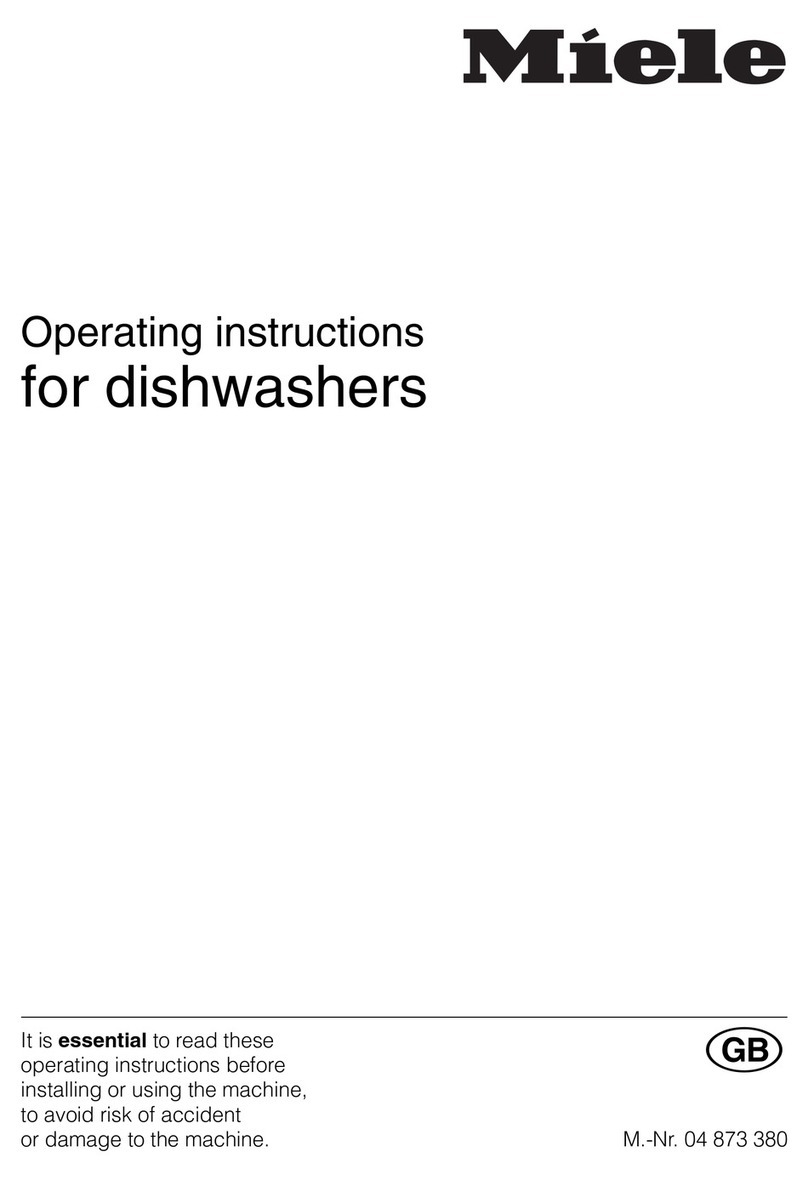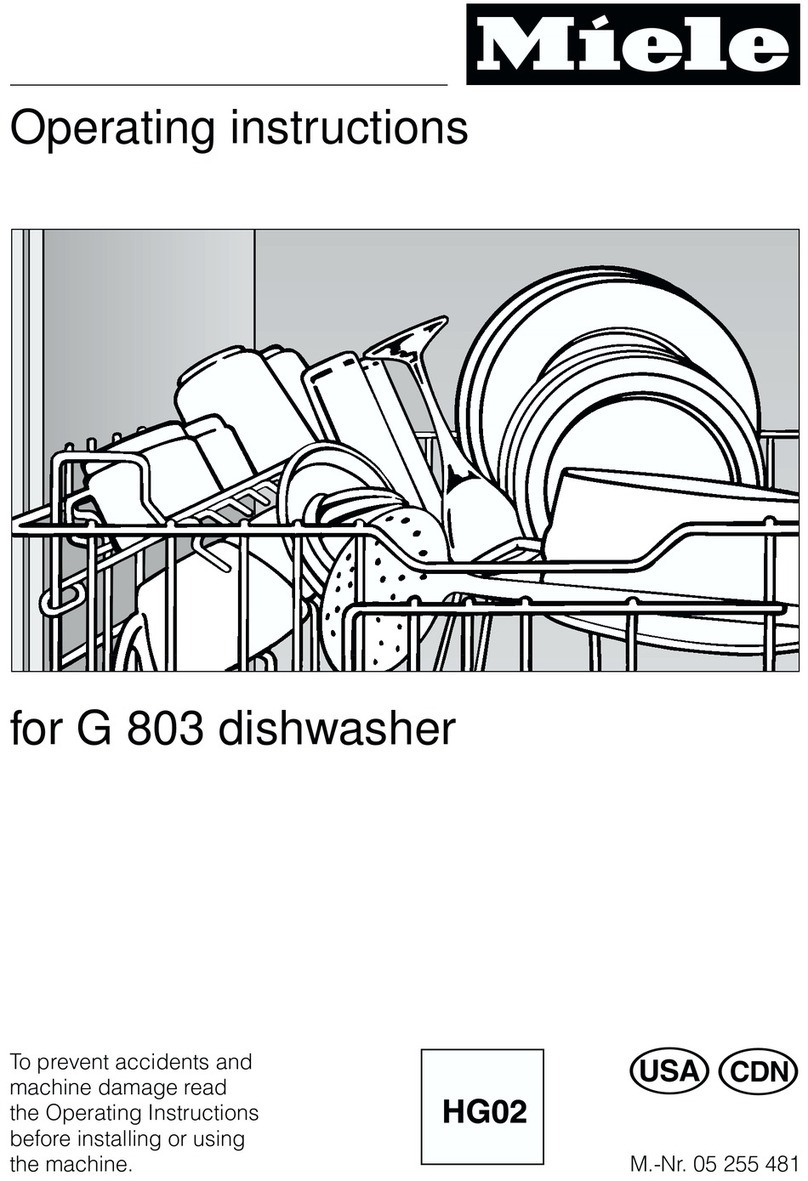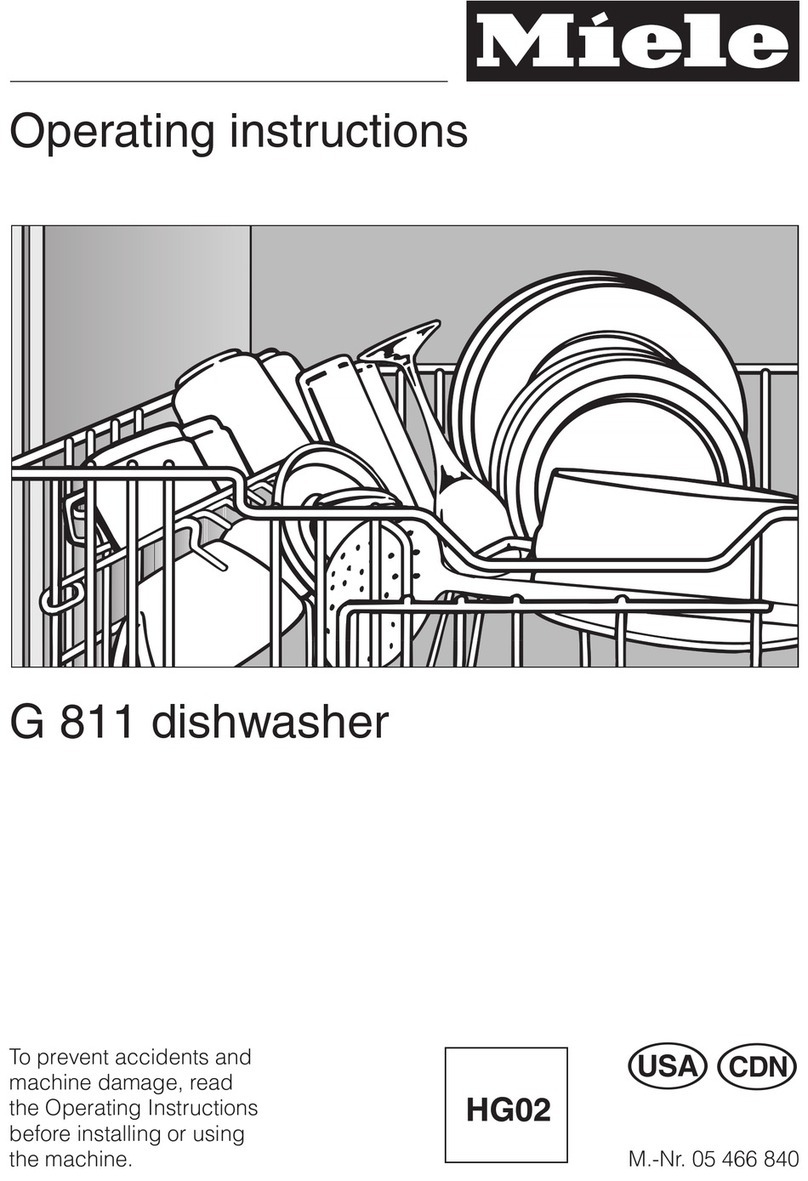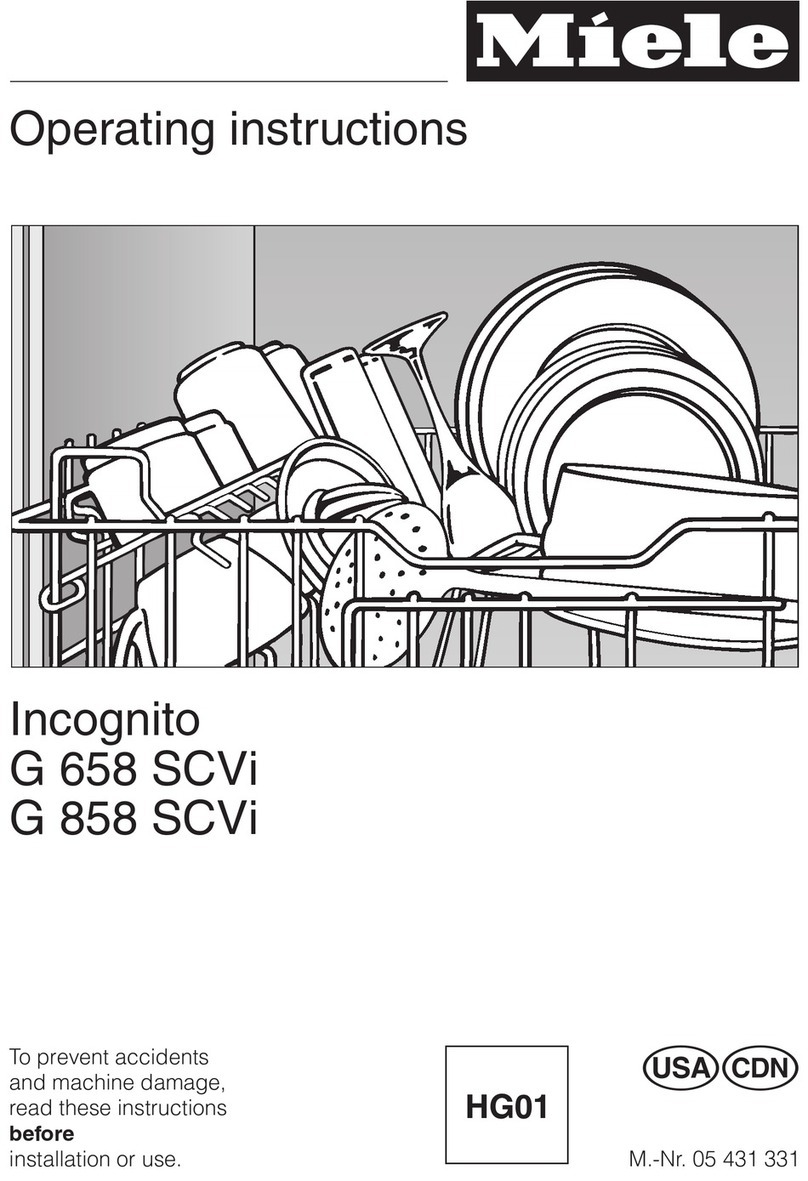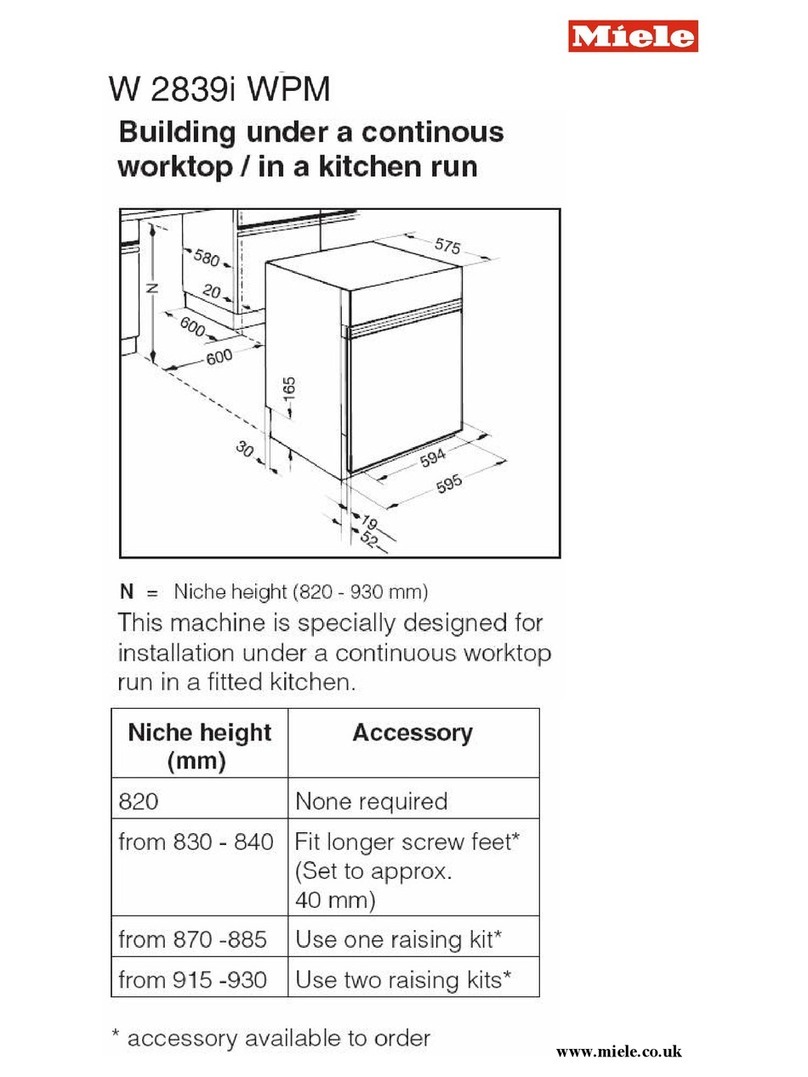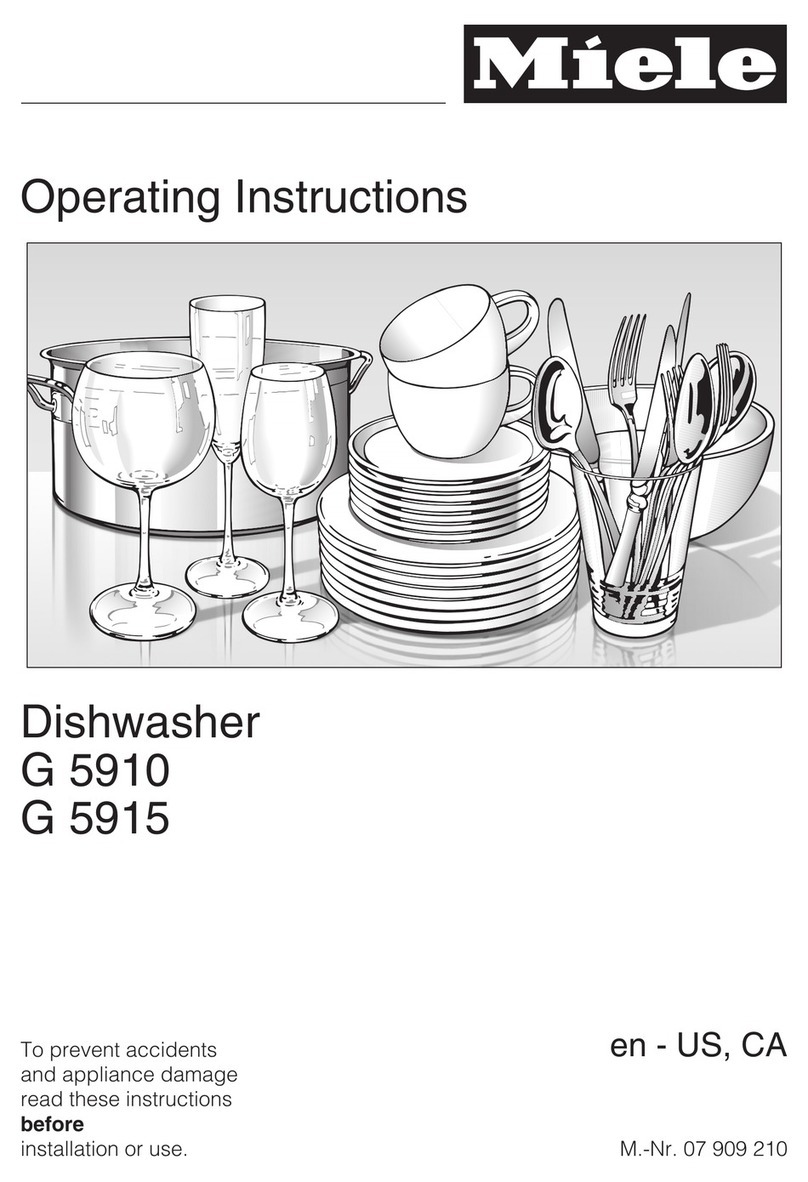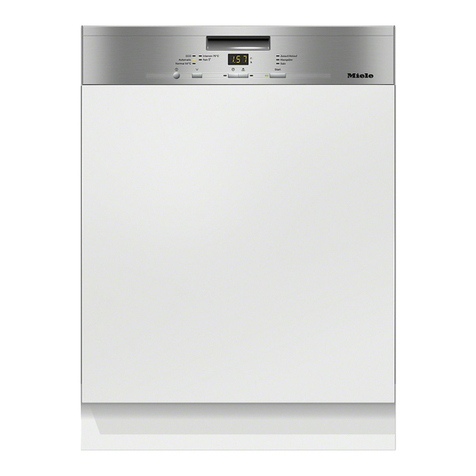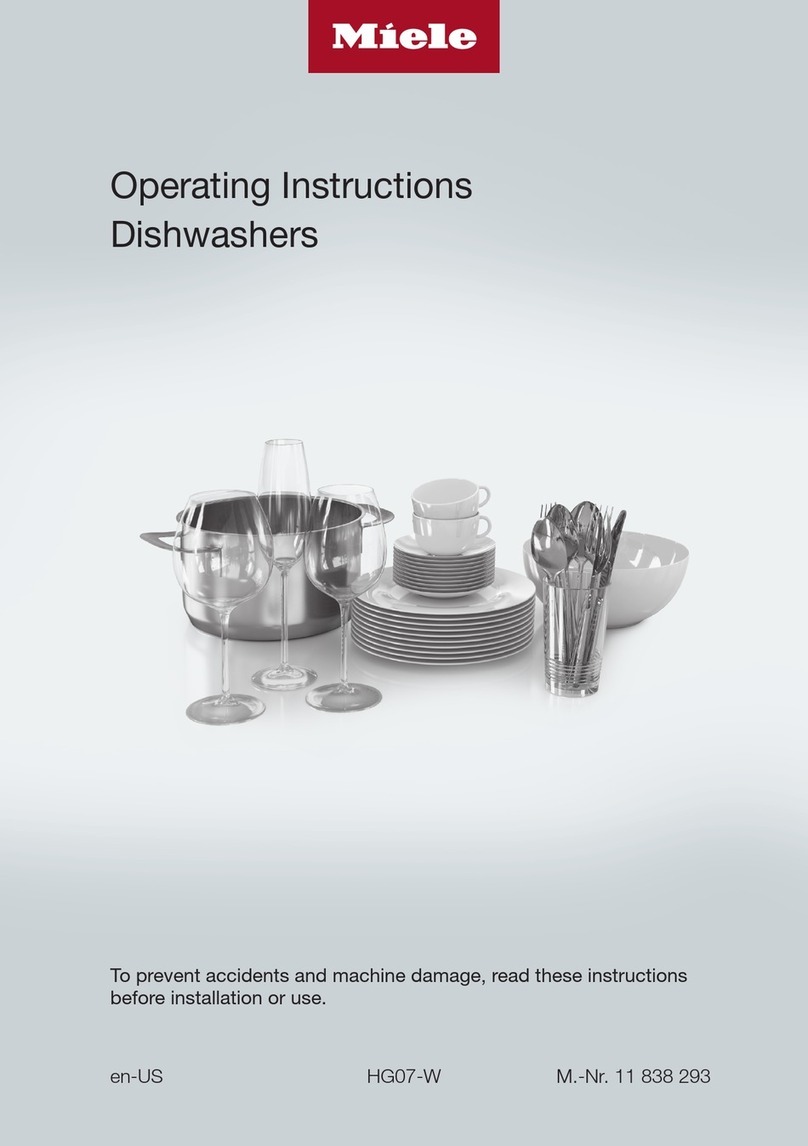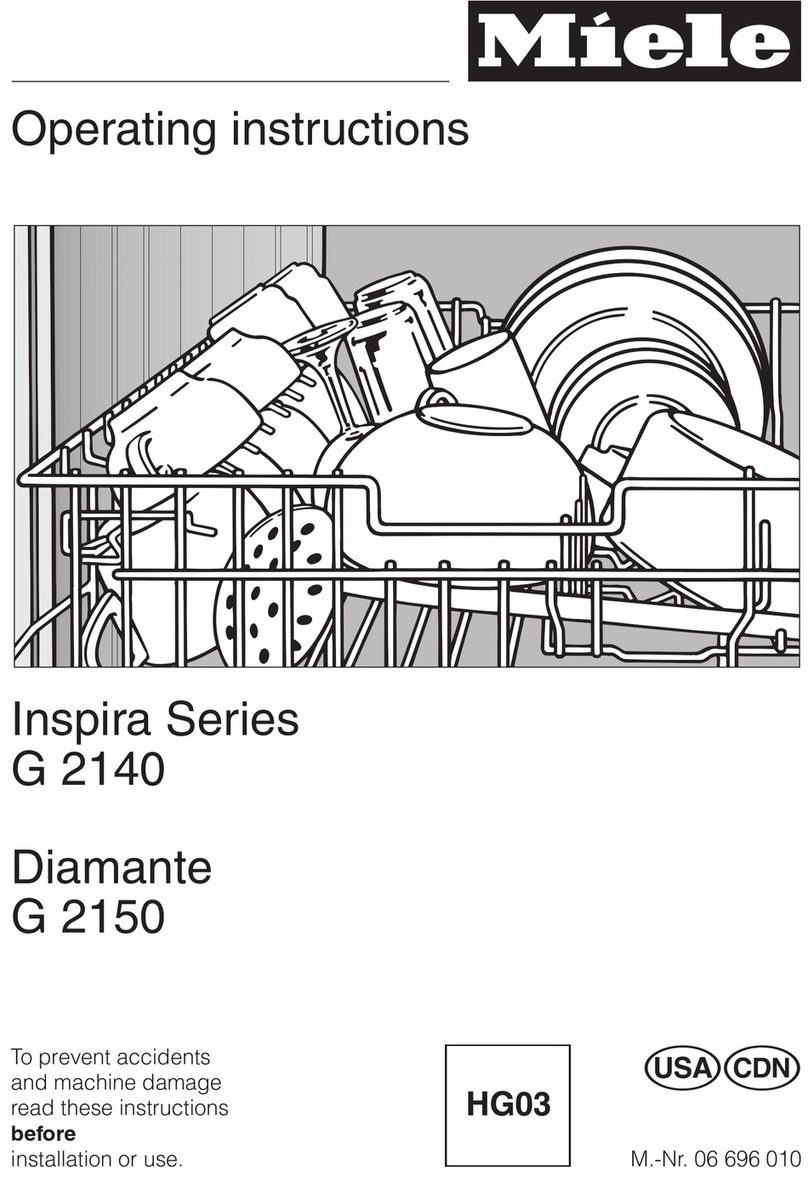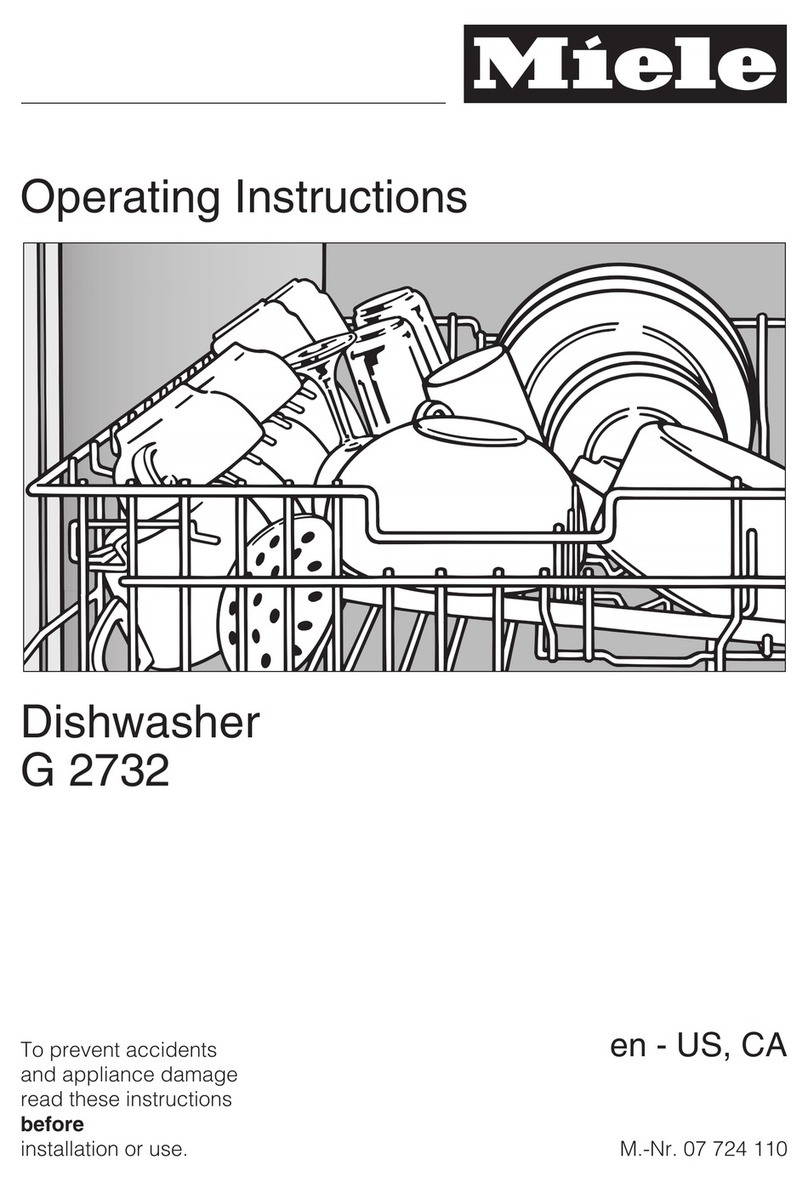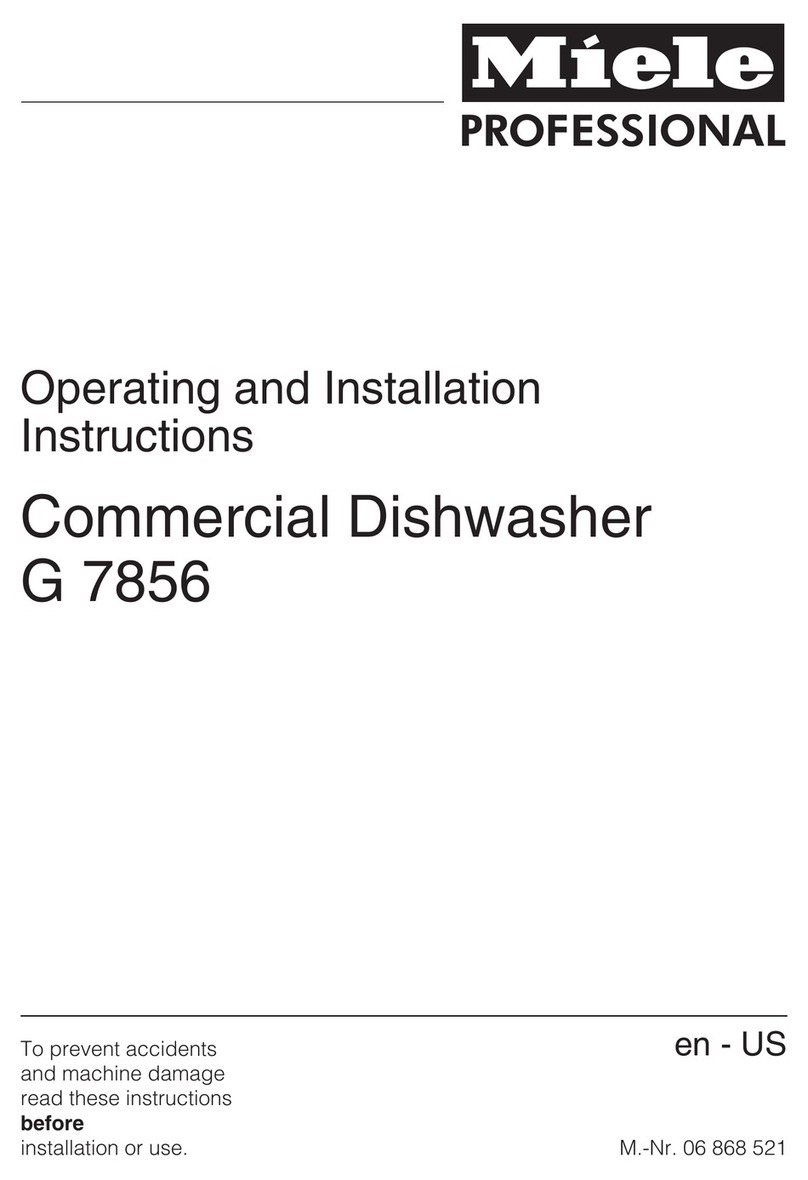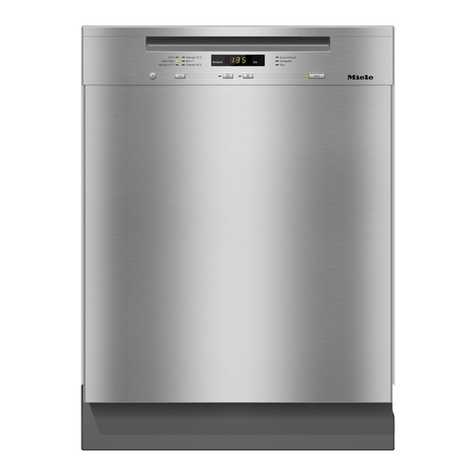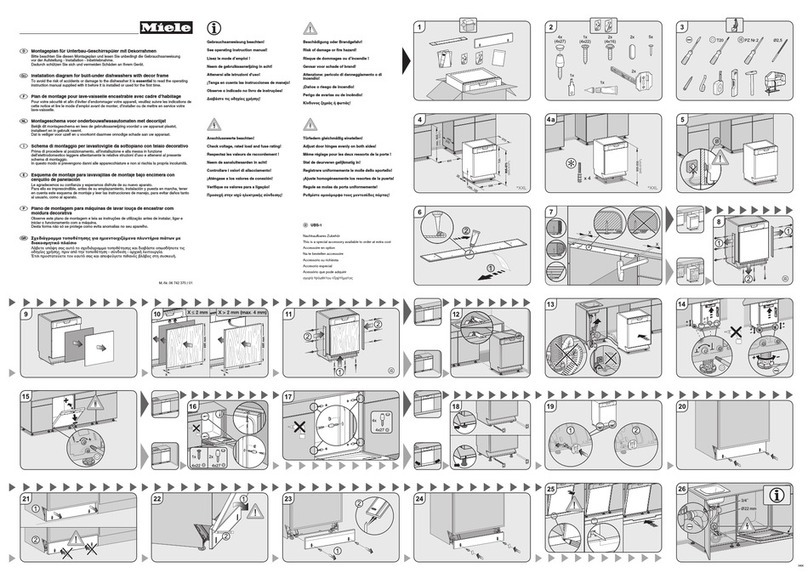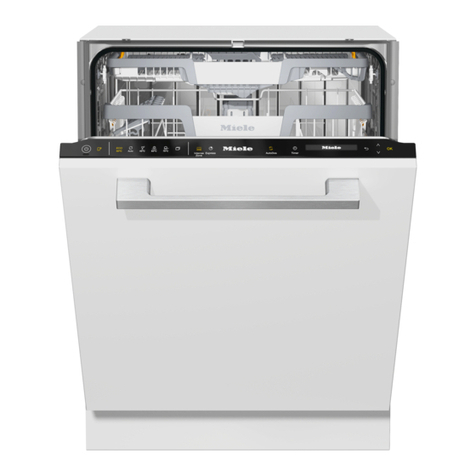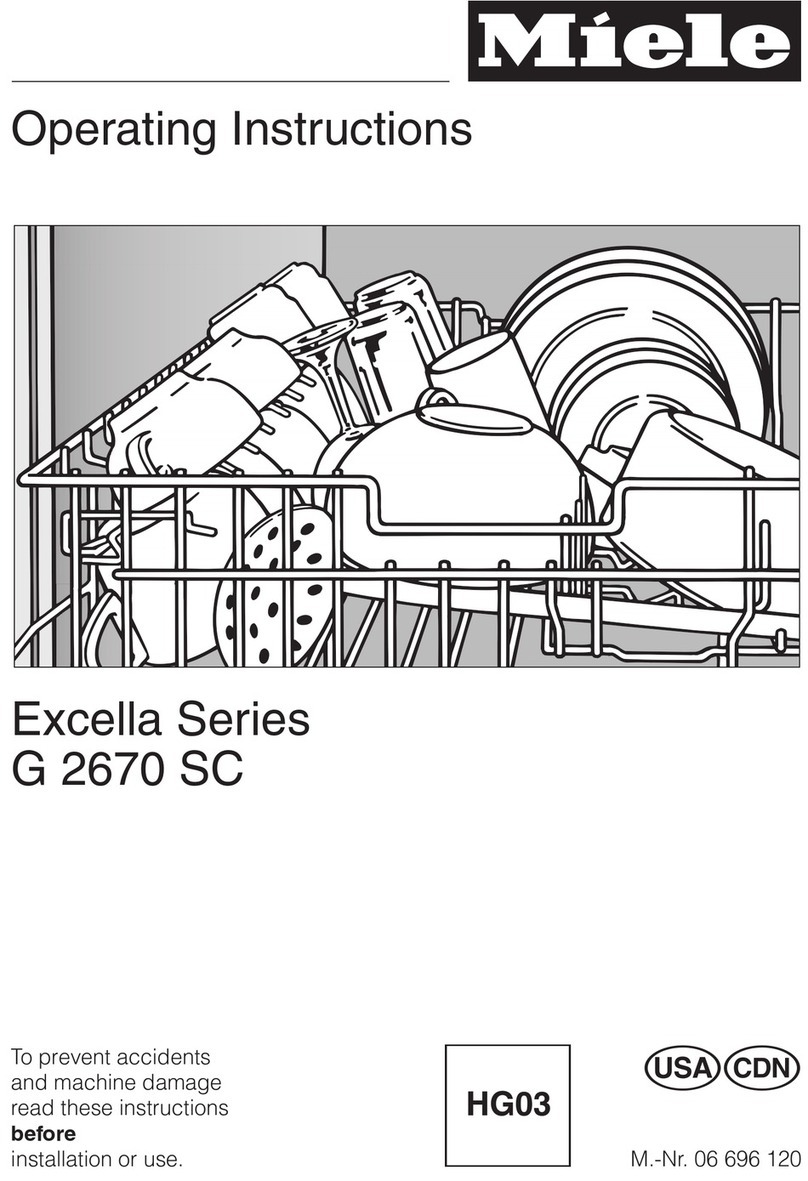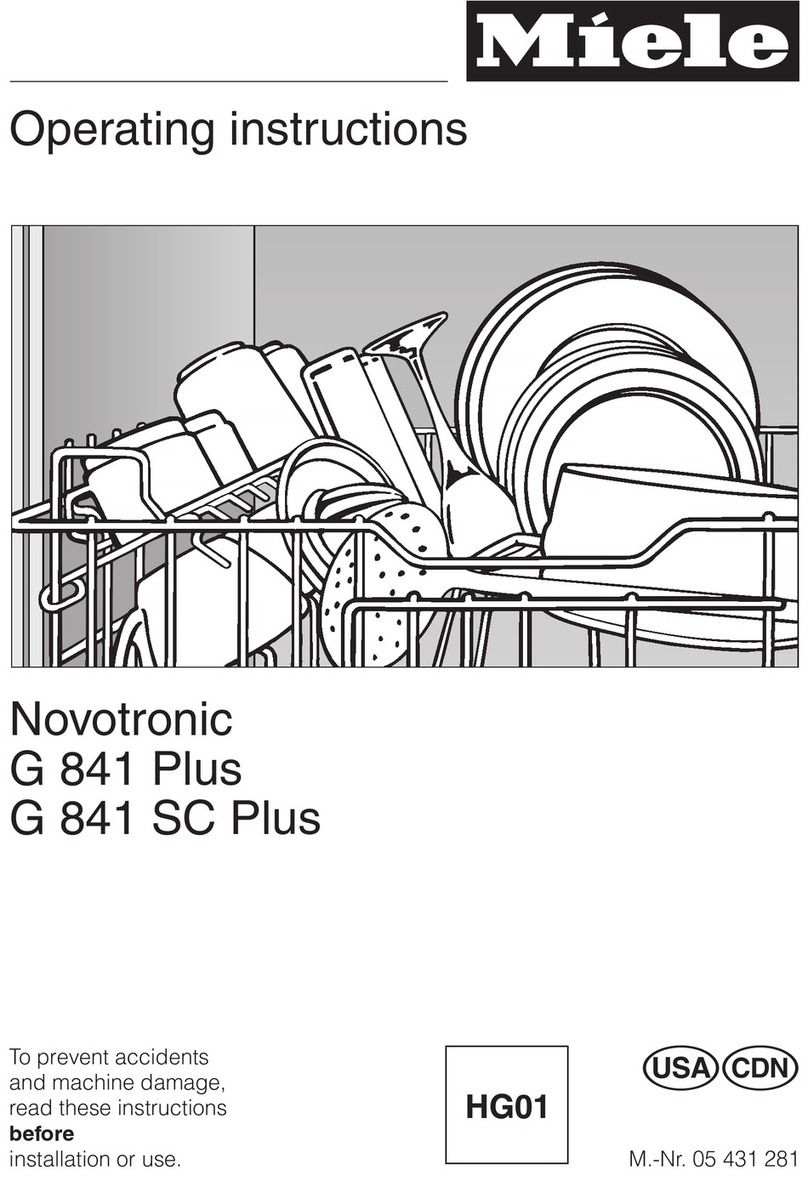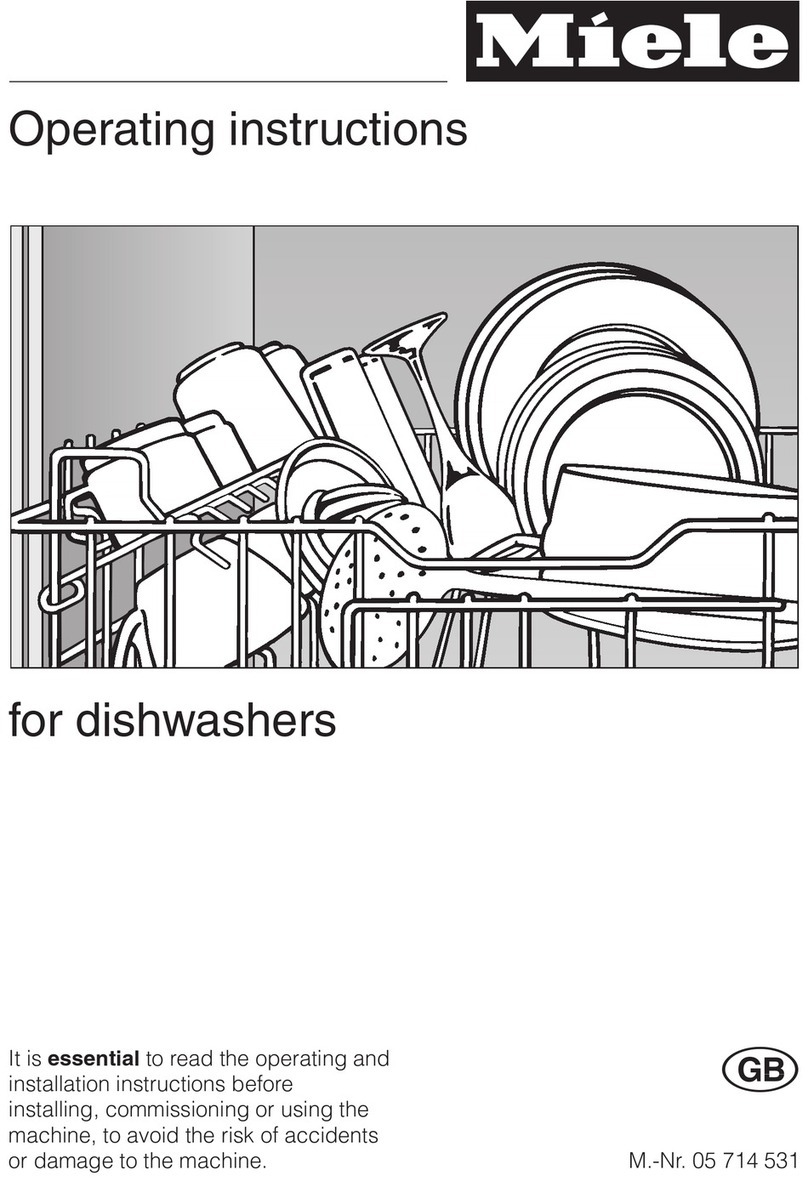WARNING –
When using your dishwasher, follow
basic precautions, including the
following:
Read all instructions before
installation or use of the dishwasher
to prevent injury and machine
damage.
The manufacturer cannot be held
responsible for damage or injury
caused by improper use of this
appliance.
Use the dishwasher only for its
intended purpose. This appliance is
intended for residential use only.
Keep these operating instructions in
a safe place and pass them on to
any future user.
Electrical safety
Before installation make sure that
the voltage and frequency listed on
the data plate correspond with the
household electrical supply. This data
must correspond to prevent injury and
machine damage. Consult a qualified
electrician if in doubt.
Before installation or service,
disconnect the power supply to the
work area by unplugging the unit,
“tripping” the circuit breaker or
removing the fuse.
Do not use an extension cord to
connect this appliance to
electricity. Extension cords do not
guarantee the required safety of the
appliance (e.g. danger of overheating).
Be certain your appliance is
properly installed and grounded by
a qualified technician. To guarantee the
electrical safety of this appliance,
continuity must exist between the
appliance and an effective grounding
system. It is imperative that this basic
safety requirement be met. If there is
any doubt, have the electrical system of
the house checked by a qualified
electrician. The manufacturer cannot be
held responsible for damages caused
by the lack, or inadequacy, of an
effective grounding system.
Installation
Installation and repair work should
be performed by a Miele
authorized service technician. Work by
unqualified persons could be
dangerous and could void the warranty.
,WARNING - Fire hazard
Do not cover or crush the plug of
an electric appliance. Ensure that the
cabinet opening for the dishwasher
provides ample space for the plug.
Installing the dishwasher in a tight
space may crimp the power cord or put
pressure on the plug which may cause
overheating.
IMPORTANT SAFETY INSTRUCTIONS
4
